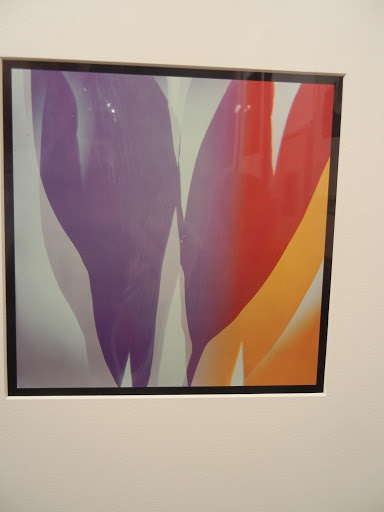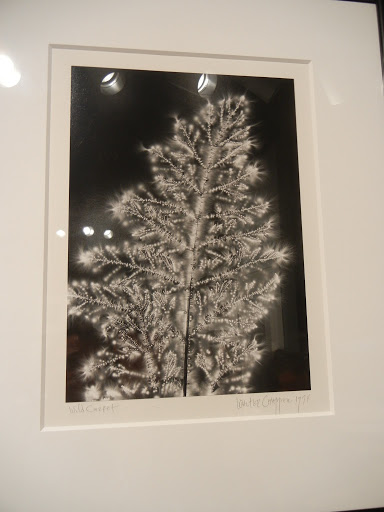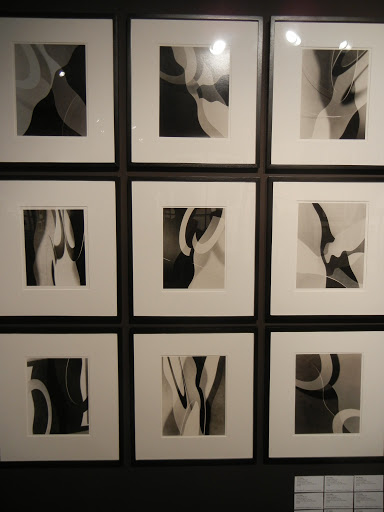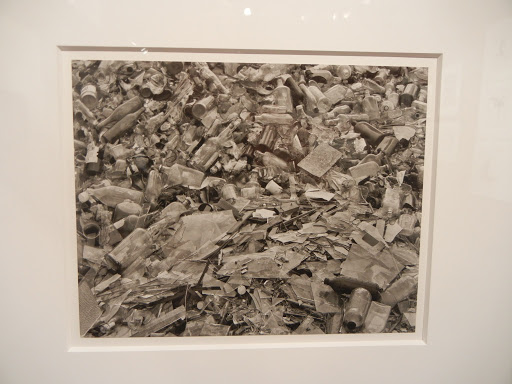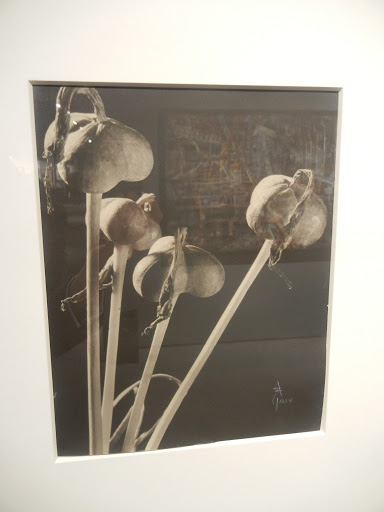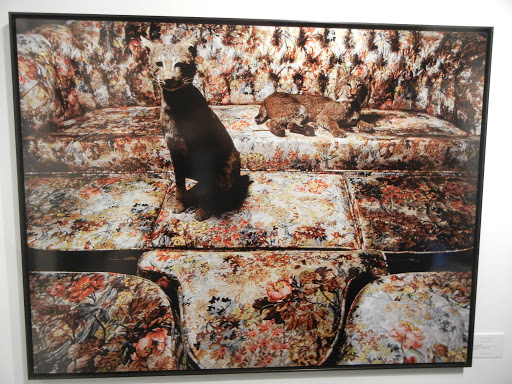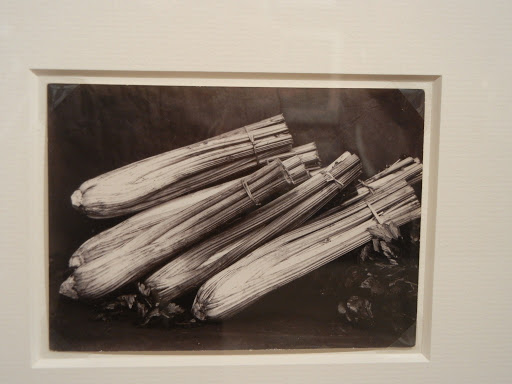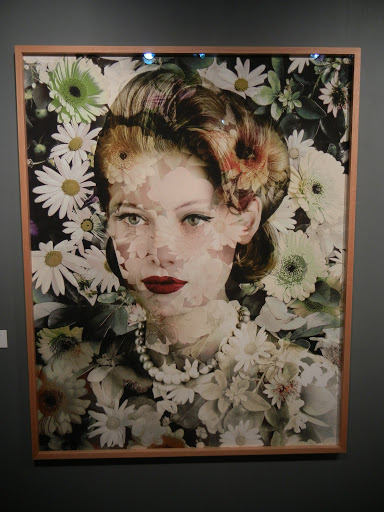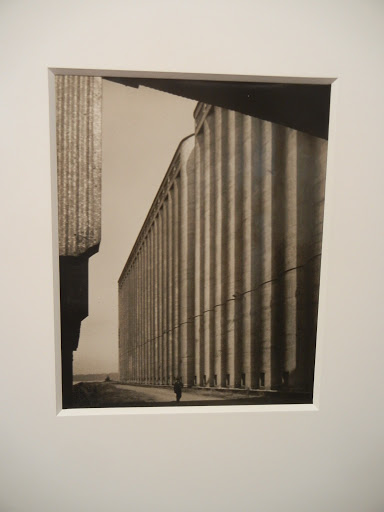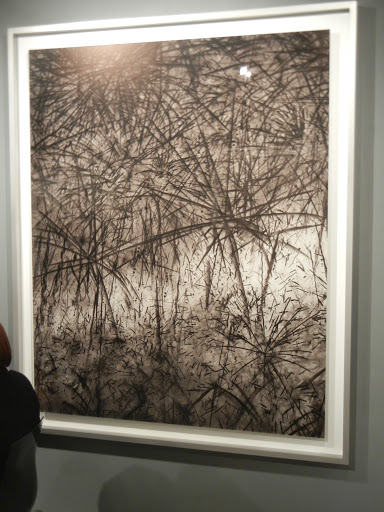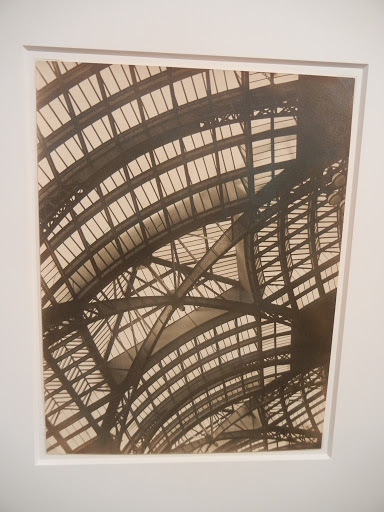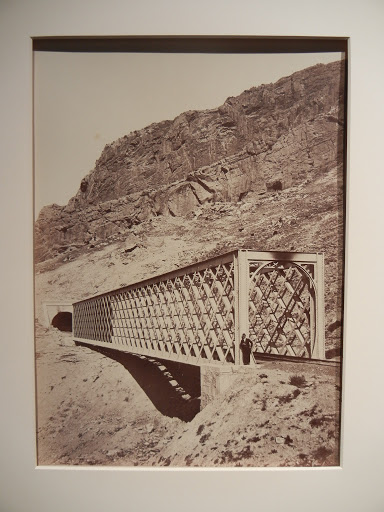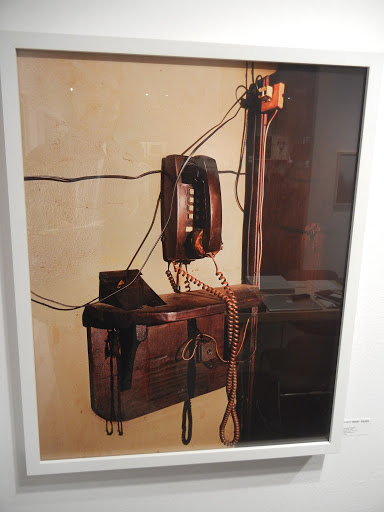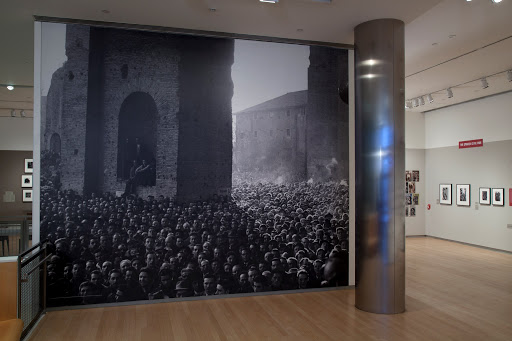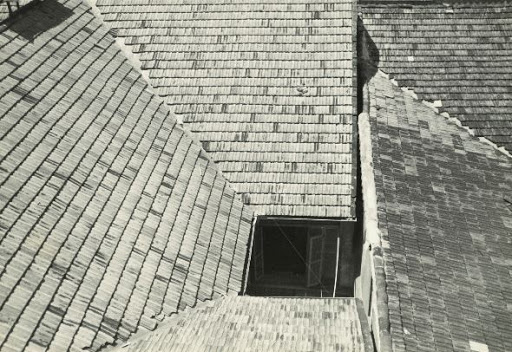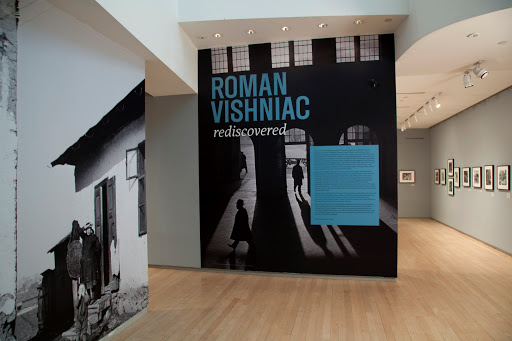 JTF (just the facts): A total of 216 black and white photographs, variously framed and matted, and hung against light blue and white walls in a series of connected rooms on the entire lower level of the museum. The exhibit also includes 13 cases containing books, letters, family photos, and other ephemera, 3 films/videos, and 90 color slides projected in a darkened side room. With the exception of 31 vintage gelatin silver prints in a back gallery, all of the prints are modern inkjet prints, made in 2012. The exhibit was curated by Maya Benton. (Installation shots at right © International Center of Photography, 2013. Photographs by John Berens.)
JTF (just the facts): A total of 216 black and white photographs, variously framed and matted, and hung against light blue and white walls in a series of connected rooms on the entire lower level of the museum. The exhibit also includes 13 cases containing books, letters, family photos, and other ephemera, 3 films/videos, and 90 color slides projected in a darkened side room. With the exception of 31 vintage gelatin silver prints in a back gallery, all of the prints are modern inkjet prints, made in 2012. The exhibit was curated by Maya Benton. (Installation shots at right © International Center of Photography, 2013. Photographs by John Berens.)
The exhibit is divided into titled sections. For each section below, I have tallied the number of images on view and listed other supporting materials.
Berlin Street Photography, 1920s-1930s
15 inkjet prints
2 cases containing 23 family photos, 1 contact sheet, 2 children’s books, 1 property deed, and 1 image of Adolf Hitler
Nazi Rise to Power, Germany, 1933-1937
8 inkjet prints
1 poster
German-Jewish Relief & Community Organizations, Berlin, Mid to Late 1930s
10 inkjet prints
1 film
Jewish Life in Eastern Europe, c1935-1938
68 inkjet prints
3 cases containing 4 books, 7 contact sheets, 3 postcards, 2 pamphlets, 2 letters, 1 letter/report, 2 images of Vishniac, 2 color images (pigment prints), and 1 label
1 touchscreen containing book scans
1 video
Werkdorp Neuwesluis Agrarian Training Camp, Wieringermeer, Netherlands, 1939
13 inkjet prints
Travel, Refuge, and Internment in France, Paris, Nice, and Marseille, 1939
13 inkjet prints
1 film
Exhibits at Yivo Institute for Jewish Research
“Pictures of Jewish Life in Prewar Poland”, January 1944
16 gelatin silver prints with inked titles
“Jewish Life in the Carpathians”, January 1945
15 gelatin silver prints with inked titles
1 case containing 4 books, 1 letter, 1 announcement, 1 flyer, and 1 scrapbook page
Portrait Studio and Nightclubs, America, 1941-Early 1950s
13 inkjet prints
1 case containing 3 images of Vishniac, 1 program, 1 scrapbook page, and 1 contact sheet
Berlin in Ruins, 1947
9 inkjet prints
1 case containing 1 announcement card, 2 passports, 8 family photos
Immigrants and Refugees, New York, 1941-Early 1950s
6 inkjet prints
1 case containing 2 family photos, 1 registration card, 3 scrapbook pages
Refugees and Displaced Persons’ Camp, Germany and France, 1947
14 inkjet prints
1 case containing 4 letters, 7 contact sheets, 1 book, 1 pin, 1 report
The Face of America at War, 1941-1944
9 inkjet prints
Scientific Work: Photomicroscopy, America, Early 1950s-Late 1970s
90 color projections
1 case containing 1 microscope, 3 business cards, 1 image of Vishniac
Jewish Community Life, New York, 1951-Early 1950s
7 inkjet prints
1 case containing 1 report, 8 family photos, 1 lesson book
Scrapbooks
6 cutouts
1 case containing 4 images of Vishniac, 5 books, and 1 contact sheet
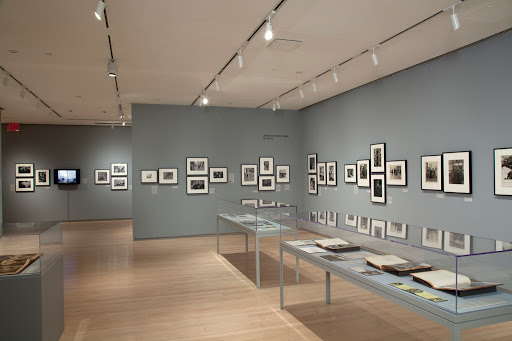 Comments/Context:
Comments/Context: It’s likely human nature, but time and again, we pigeon hole artists by their best known work, assuming that this thumbnail portrait of what we remember best is in fact representative of all that they had to offer. When we think of Roman Vishniac, most of us can come up with a glimpse of his powerful images of Jewish life in pre-World War II Eastern Europe. But as this thoughtfully composed and comprehensively researched exhibit proves, there was much more to the Vishniac story than just this one superlative body of work. Across roughly five decades, in addition to being a pioneering social documentary photographer, this show discovers that he was also a Modernist, a New York photographer, and a talented and innovative scientific photographer, among other labels we might affix to his talents. Taken as a whole, it’s the kind of challenging retrospective that upends most of your pre-conceived notions and extends your understanding far beyond the simplest and most obvious of highlights.
The exhibit begins with Vishniac’s images of 1920s Berlin, where his unexpected version of Modernism has been infused with subtle wit. Silhouettes inside a railway terminal and the interlocked shadows of a window washer’s ladders play with the stark geometries we have come to recognize as hallmarks of the Modernist style, but these avant-garde visual tropes evolve into something more wry and cunning in Vishniac’s hands. A woman pulls a reluctant dog with scraping tension and a standard “polar bears at the zoo” shot is inverted, putting the visitors behind the bars and the bears seemingly out in the open doing the watching. In these early years, we can see Vishniac trying on the predominant styles of the times and adapting them to his own artistic needs.
As the Nazis rose to power in the early 1930s, Vishniac was keenly observant of its slowly encroaching influence. He took images of his daughter (so as not to attract attention) in front of election posters, and made many images of swastika flags outside shops, pubs, and as backdrops for ordinary kids playing in the street. He also began making pictures at Jewish community and relief organizations, capturing kids wrestling at soup kitchens and families waiting in the immigration office. It’s clear from these images that Vishniac was already attuned to what was going on, and was therefore the right photographer in the right place when the commission from the Joint Distribution Committee came along.

Like the FSA photographers in America, Vishniac had a particular point of view he wanted to express in his now famous images of Eastern European Jewish cultural life. Seen in the context of his earlier work, it’s clear that he slowly turned up the volume of conscious poignancy in this group of photographs, centering in on portraits of poverty stricken families, weary elders, and optimistic children. Taken together, the pictures provide an empathetic record of a life that was soon to be extinguished, full of basement dwellings, dark stairs, cramped beds, and outdoor kitchens. Street life was populated by corner vendors and small shops, men selling everything from old clothes to fish and fruit while the neighborhood kids tumbled on the cobblestones. It’s an enduring and soulful multi-generational portrait, with grandmothers and grandfathers woven into the fabric of the community, teaching their grandchildren to read and trudging along through the damp snow. The larger vintage prints with inked titles taken from two exhibits in the 1940s (seen in a side room) are the best examples of the nuance and subtlety of these images.
But while Vishniac’s place in the canon of photographic history was forever secured by this important body of work, his artistic story didn’t end with A Vanished World. He went on to cover the healthy work of Zionist youth camps in the Netherlands (with a series of terrific crisscrossed Modernist beam silhouettes) and refugee beachgoers in France. In 1941, Vishniac emigrated to the United States, settling in New York and opening a portrait studio. Chagall and Einstein sat for him, and he made lively images of the burlesque dancers, singers, comedians and other entertainers to be found in various nightclubs. His images of life in the city from this period extend beyond Jewish and immigrant life to a wider perspective on wartime America, from food rationing and women repairing cars, to donating blood and saluting the flag. Vishniac also returned to Europe in the late 1940s, making haunting images of bombed out Berlin and Marseille in ruins.

Perhaps the most surprising set of images in this exhibit are Vishniac’s later life scientific studies. Shown as projections in a side room, cross sections and core samples of muscle tissue, slime mold, dew drops and butterfly wings explode with intense color, amino acids and hormones becoming swirling microscopic abstractions. Like Berenice Abbott and her studies of light and physics for MIT, Vishniac made an entire second (or third) career out of his photomicroscopy efforts.
In what is surely a sign of a successful exhibit, I walked out of this show with an entirely new appreciation of Roman Vishniac and his photographic accomplishments. His chronicle of Jewish life remains supremely tragic and evocative, but I now have a much better understanding of the larger context of his career. I came away with the conclusion that Vishniac wasn’t exactly who I thought he was, this new perspective entirely a function of visiting this smart reappraisal.
Collector’s POV: Since this is a museum show, there are, of course, no posted prices. Vishniac’s prints have been consistently available in the secondary markets in recent years, but not necessarily in large numbers. Prices have ranged from $1000 to nearly $45000, with many of the outcomes at the top end of that range coming from a 12 print portfolio. At the gallery level, Vishinac’s work can be found at Howard Greenberg Gallery in New York (
here).
















